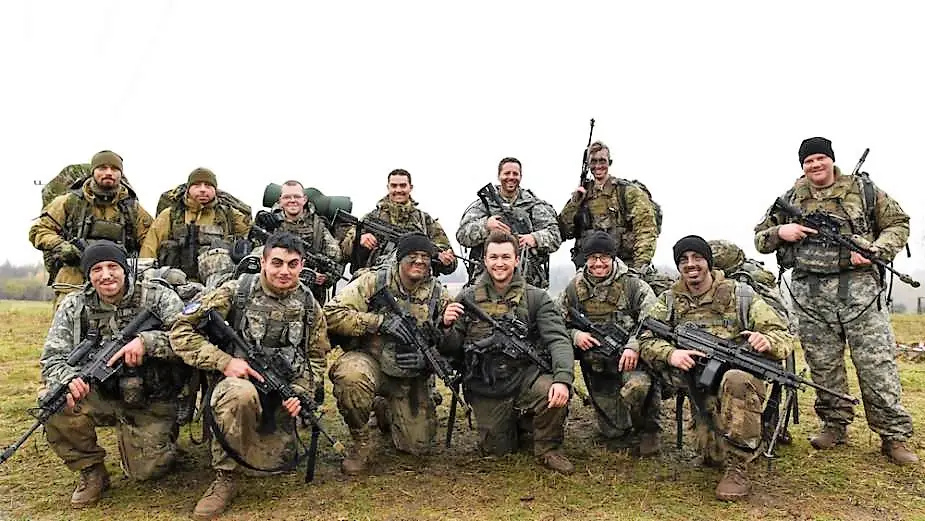Slovakian Defense Minister says military spending at 2 percent should be base but not target
C. Todd Lopez reports on U.S. Department of Defense’s website that, among NATO partners, an expenditure of 2% of the gross domestic product may no longer be enough for military spending, said Slovakian Defense Minister Jaroslav Nad' during a press briefing on March 17 in Slovakia's capital, Bratislava.
Follow Army Recognition on Google News at this link

"We talked about the fact that 2% of GDP as the cost of defense is not a level that should be our objective, rather it should be just a base," Nad' said after a meeting with Secretary of Defense Lloyd J. Austin III. (Picture source: U.S. Embassy in Slovakia)
"We talked about the fact that 2% of GDP as the cost of defense is not a level that should be our objective, rather it should be just a base," Nad' said after a meeting with Secretary of Defense Lloyd J. Austin III. "I can confirm that a number of allies already declared at the ministerial meeting that they envisage achieving as much as 3%". Poland and some Baltic countries might achieve 2.5%, he said.
Slovakian Defense Minister Jaroslav Nad' also thanked U.S. Secretary of Defense Lloyd J. Austin for a commitment of U.S. troops in Slovakia to enforce the defense of that country.: "The capabilities that they will provide is something that we are lacking here in Slovakia, and that will strengthen our defense and will strengthen it in a significant way," Nad' said. "The enhanced forward presence troops, this is a significant contribution to improving the defense of Slovakia."
Austin told Nad' the U.S. supports Slovakia's willingness to host NATO troops in their country to bolster the defense of Europe and for its continued assistance to Ukraine: "I commend Slovakia for its contributions to NATO, for the humanitarian and military assistance that you provided to Ukraine, and for the generosity that you've shown to the innocent refugees fleeing Putin's war of choice," Austin said. "Your actions speak volumes. The United States deeply values its bilateral cooperation with Slovakia. We stand together with Slovakia as a valued member of NATO and will stand together with you to defend our values and our common security."
The two defense leaders also discussed the modernization of the Slovakian military, which includes the development of mechanized brigades and the replacement of military equipment, including fighter aircraft.
When it comes to Ukraine, Austin said the Ukrainian military has so far been able to, through a variety of means, prevent the Russian military from gaining air supremacy. It's an effort the U.S. hopes to continue to support: "They've done that through effective use of air defense systems, both medium-range and short-range air defense systems," Austin said. "Our goal has been to continue to reinforce those things that have worked for the Ukrainian forces. So, we are talking to a number of our allies and partners to ensure that we get as much capability as we can to continue to provide help to the Ukrainian forces."
Austin also said that continued Russian attacks on civilian populations might be construed as war crimes if those attacks were deliberate: "These attacks that we've seen most recently ... appear to be focused directly on civilians," Austin said. "If you ... target civilians purposely, then that is a crime. So, these actions are under review by our State Department, and, of course, ... there's a process that we'll go through to review all of this. But we call upon Mr. Putin to cease these horrible actions. Again, these are civilians and not combatants, and so they should not be targeted."

Soldiers assigned to the 1st Squadron, 152nd Cavalry Regiment, 76th Infantry Brigade Combat Team, 38th Infantry Division, Indiana Army National Guard, pose for a photo with Slovak allies following the conclusion of a live, field training exercise at Lest military training center, Slovakia, Nov. 7, 2019 (Picture source: U.S. Air National Guard/Senior AirmanJonathan W. Padish)


























